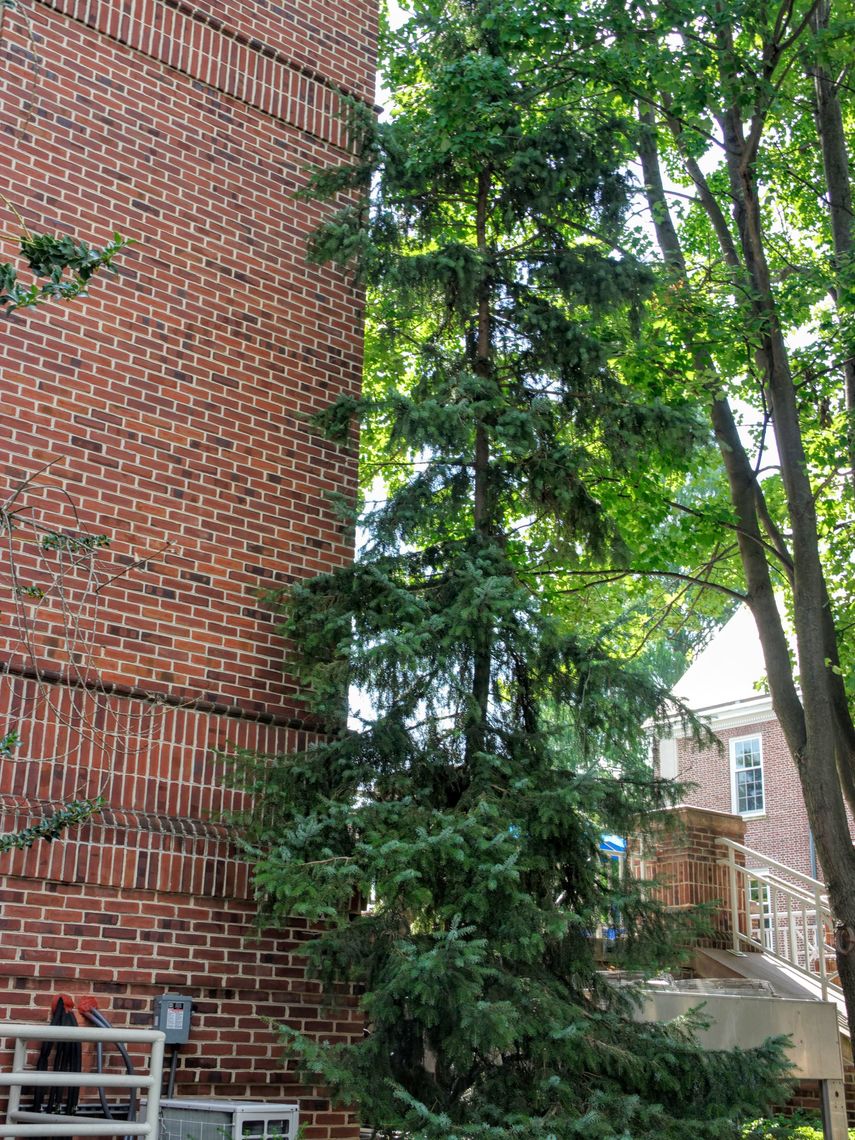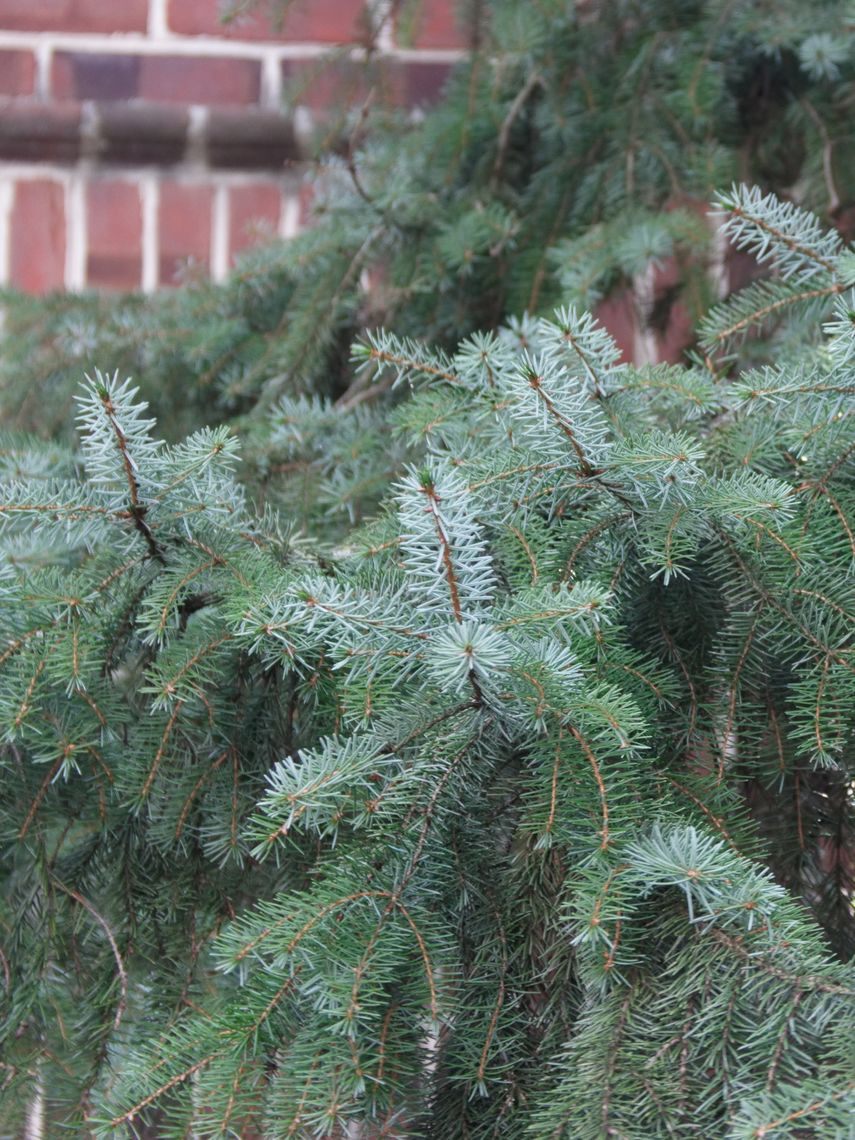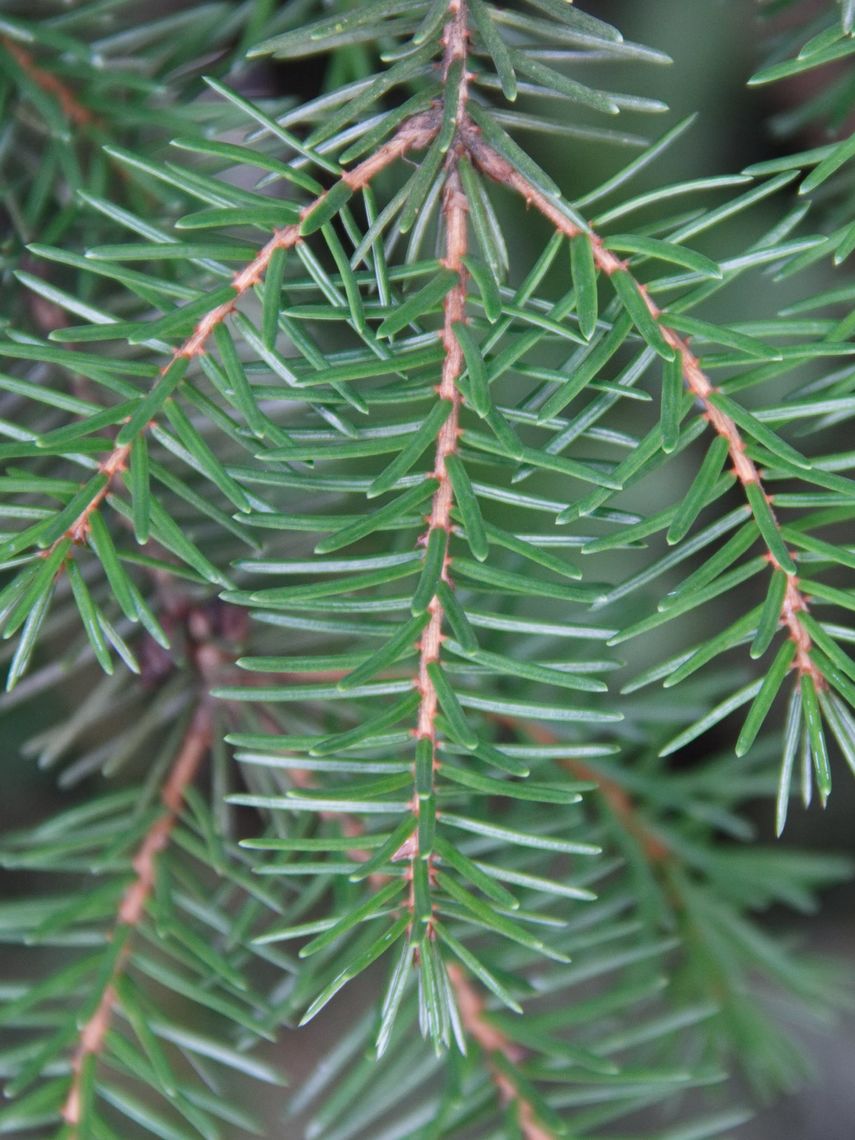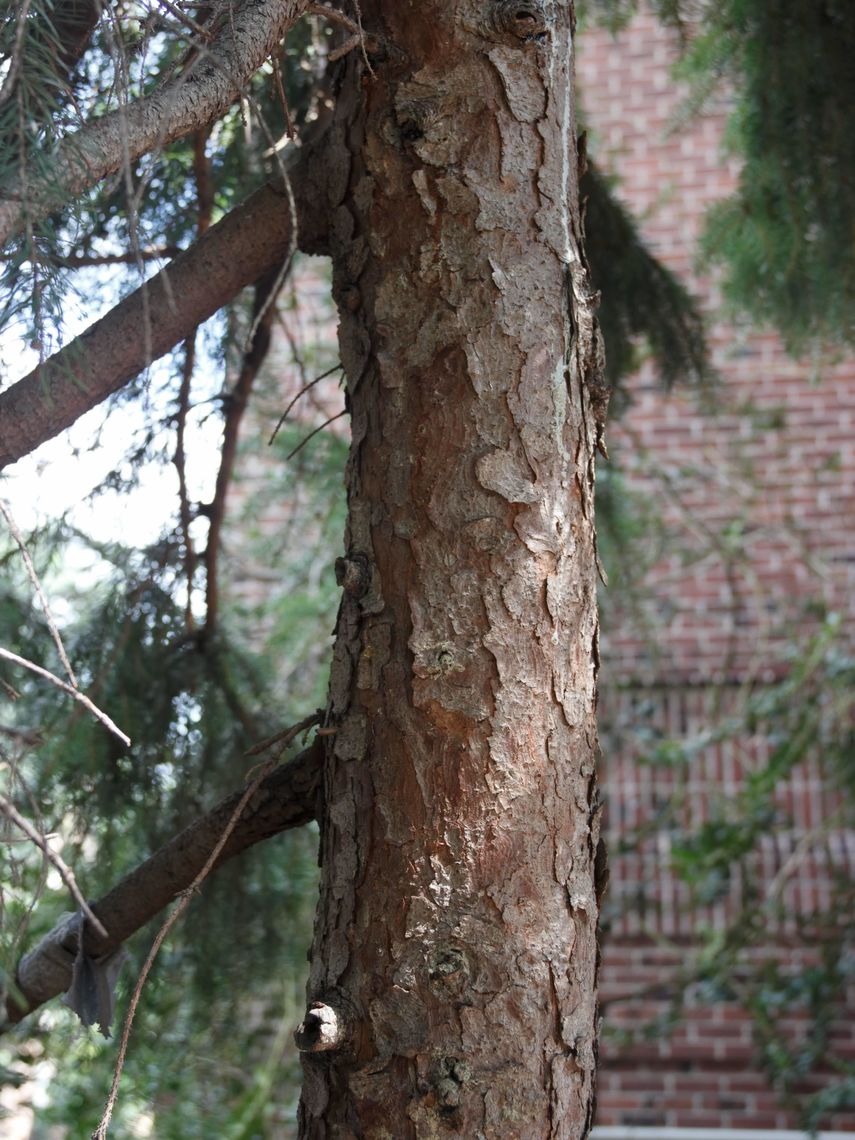Serbian Spruce (Picea omorika)
The Serbian spruce has drooping branches that point upwards at the tips, and glossy green needles that have thin, white streaks. When young, the tree's cones are distinctly purple, making them easily visible. Once mature, the cones turn red-brown. Unfortunately, the Serbian spruce is a threatened species in its native habitat. However, it is doing well in North America. This tree attracts songbirds and nesting birds.
Family: Pinaceae (Pine)
Characteristics: The half-inch to 1-inch-long needles are a glossy dark green and each have 4 white streaks. Cones are 2 inches long and are purple when young, maturing to a red-brown. Bark is dark brown and peels into thin strips. This tree has a narrow pyramidal shape with drooping branches that point upwards at the tips. It grows 40-60 feet high and 15-20 feet wide.
Foliage: Evergreen (foliage present year round)
Geographic Origin: Serbia, Bosnia, and Herzegovina (non-native)
Cultivation Notes: Requires low maintenance. Does best in full sun to part shade, in moist andwell-drained soils. This tree prefers cool summer climates, though is able to adapt to hot and humid conditions better than many other spruce species.
Number on Campus: 1
Sources: Dirr, Morton Arboretum, Missouri Botanical Garden




